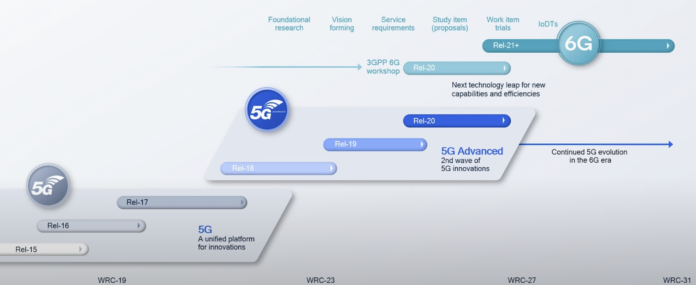As it develops foundational 6G technologies, Qualcomm is focused on delivering “maximum impact” for future use cases, sustainability and network TCO
Qualcomm has been instrumental in developing foundational wireless technologies, as well as using its work to help with relevant global standardization activities, since the company was founded in 1985. During an interview at Mobile World Congress in Barcelona, Senior Vice President of Engineering and Global Head of Wireless Research John Smee laid out his R&D methodology— “The balance really is about trying to do the right things at the right scale.”
Smee continued: “We have to make a variety of bets, if you will. There’s the longer moonshots when we’re trying to make the impossible possible…It’s also about really working with our business teams to understand what’s the highest value from a prioritization standpoint that can move the needle for something like IoT or XR or automotive connectivity.” He described simultaneous focuses on those moonshots and “interesting intermediate-term topics and, within those, identifying the bigger, complex ideas that can take us forward.”
As it relates to 6G, and the ongoing evolution of 5G to 5G-Advanced, Smee called out Qualcomm’s work on Giga-MIMO, RedCap and supporting artificial intelligence across a continuum of device, edge and cloud.
As for the big vision of 6G, Smee looked at a 2030 deployment timeframe and highlighted the need for the technology to “make sense and add value to a network and to types of devices from 2030 all the way to 2040.” In terms of applications, he called out extended reality (XR) and RF sensing to help understand the physical environment. “It’s about looking at the future use cases, the energy- and cost-effectiveness of operating the network, and then also the reality that there’s more and more connected devices. For us, our 6G design right now is about making sure we’re hitting each of those key target areas to have that maximum impact.”
With Giga-MIMO, the idea is to enable a leap from massive MIMO, used commonly for mid-band (3.5 GHz) 5G deployments, to antenna systems with thousands of elements to support deployment of 6G in upper mid-band frequencies from 7 GHz to 16 GHz. In this paradigm, the upper mid-band would serve as the coverage layer for 6G while facilitating reuse of 5G massive MIMO sites to deliver comparable coverage.
5G NR-Light Reduced Capability (RedCap) was standardized in 3GPP Release 17. It was designed to support 5G communications for devices that don’t need the full capabilities of 5G, things like wearables, industrial IoT sensors, hot spots and consumer premise equipment for fixed wireless access (FWA). Last year Qualcomm announced the Snapdragon X35 Modem-RF System for RedCap.
RedCap is currently “making its way into other types of [enhanced mobile broadband] use cases,” Smee said, including FWA. “When we’re looking at bridging the digital divide in more economies, more markets, it’s really hitting a really interesting value play to bring connectivity to more people, and a couple hundred megabits per second is a great data rate for many types of applications.” For IoT, he said RedCap “is going to open up new service possibilities” in areas like logistics and tracking, as well as more generally for keeping up with the volume of network-connected devices.
As it relates to AI, during MWC Qualcomm and OEM partners showcased on-device generative AI enabled by the Snapdragon 8 Gen 3 Mobile Platform. But that’s just one touchpoint in an AI continuum that spans the device, the edge and the cloud. On the path to 6G, “As we’re designing that next generation of wireless,” Smee said, “it’s about recognizing that we can have compute power that’s much larger than before. And we can harness it in different ways, whether it’s a large language model or other advanced AI techniques.”
Adding intelligence to the device, the edge and the cloud also prefaces the idea of adding more intelligence to the air interface that wirelessly links them all together. “We can bring AI natively, for example, into the 6G standard,” Smee said. What that looks like in the real world is improved predictive capabilities that, in sum, would decrease the amount of overhead for information exchanges across the network.
“We’re combining not only Qualcomm’s amazing hardware capabilities and software capabilities, but then looking at the air interface wireless innovation, saying, ‘I can bring these together in very interesting ways.’ It’s a really exciting area and a great example of a technology vector that’s just moving really, really quickly.”
For more on Qualcomm’s advanced wireless R&D, read the following:
- Giga-MIMO is the foundation for wide-area 6G
- Enabling boundless XR with dynamic distributed compute
- Enhancing vehicular safety and experience with cloud/connectivity
- How can operators benefit from digital twin networks?
- Access to more spectrum means more economic and national security
- Qualcomm focused on making 5G mmWave more cost effective

